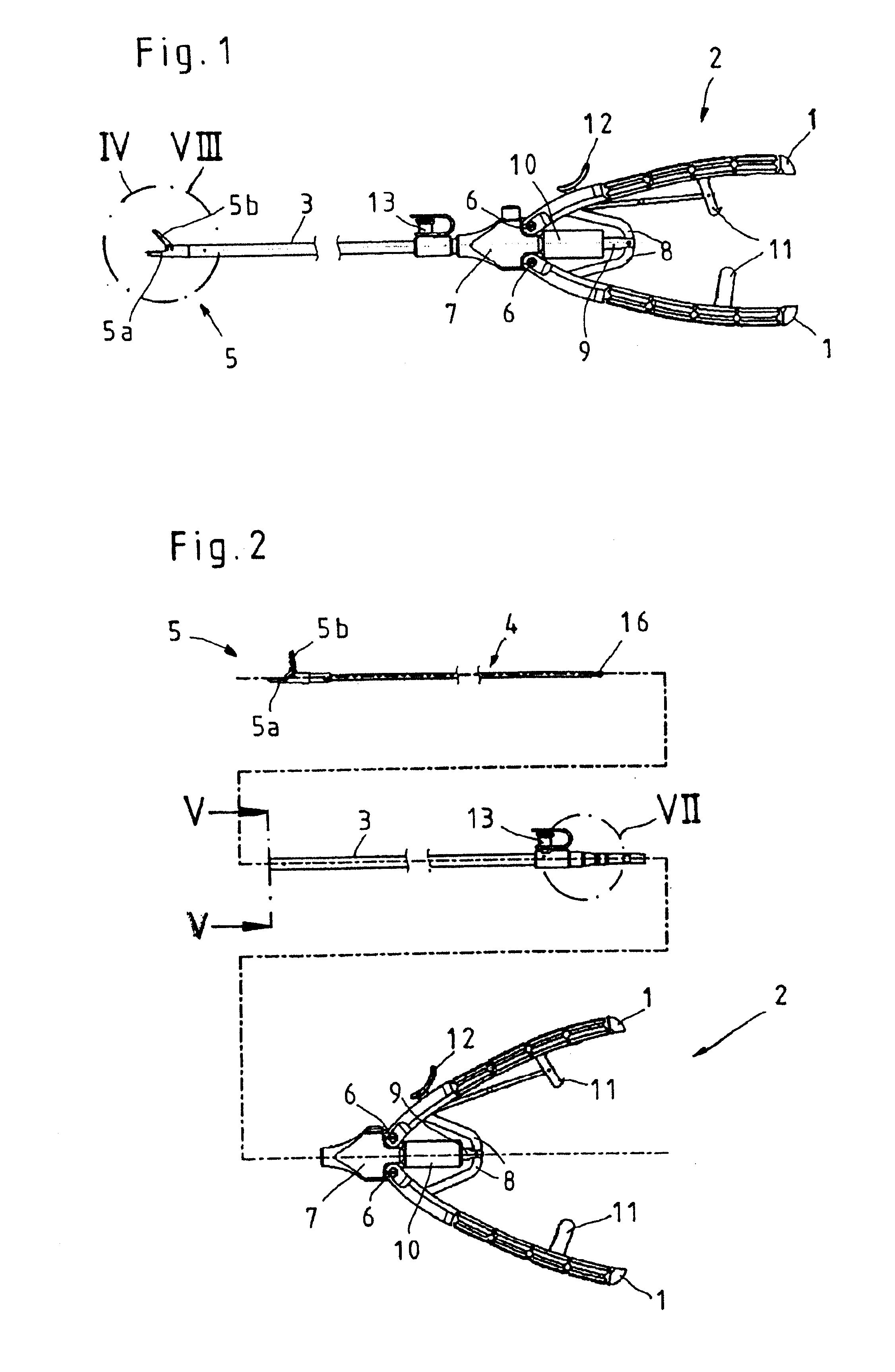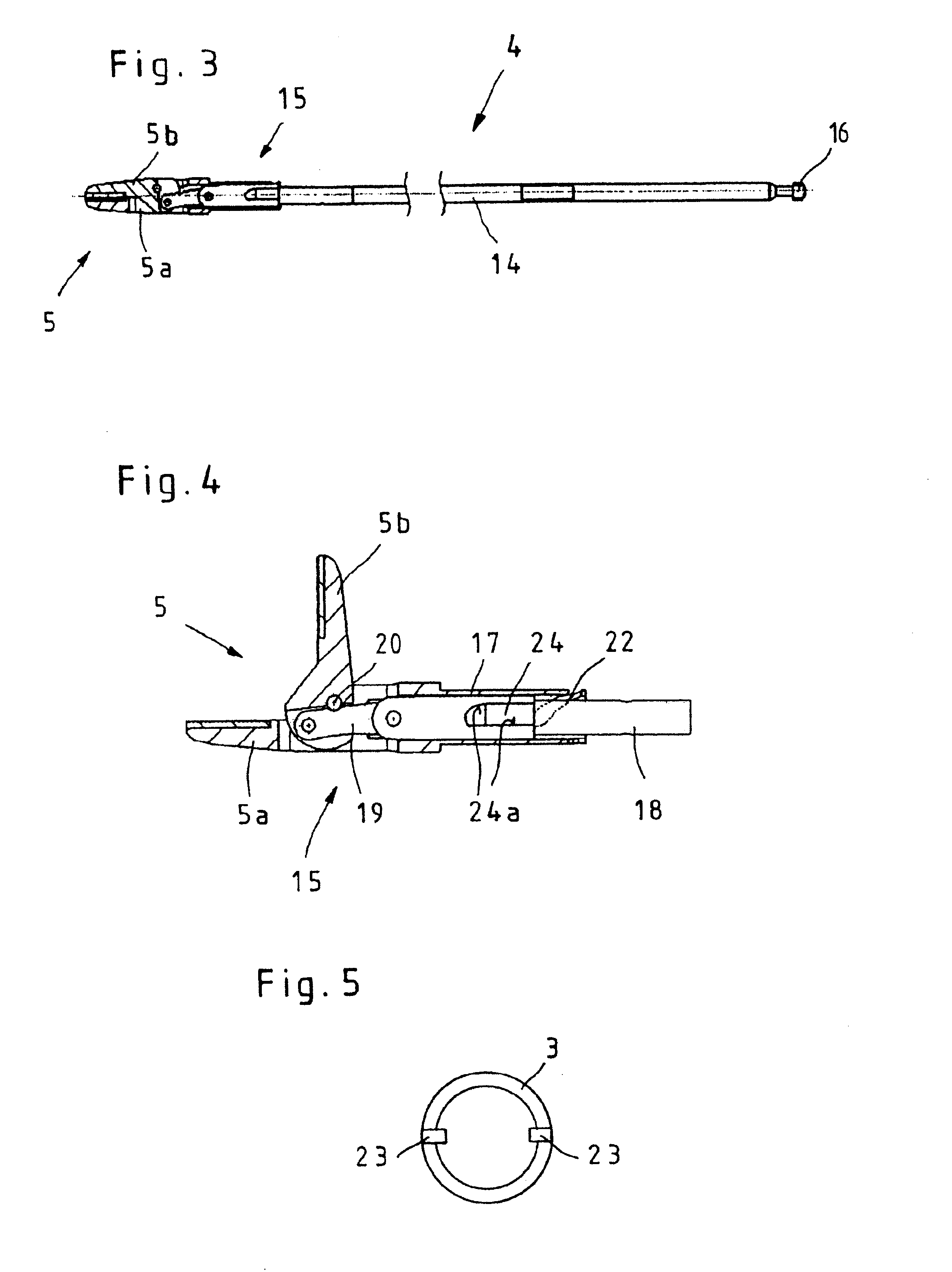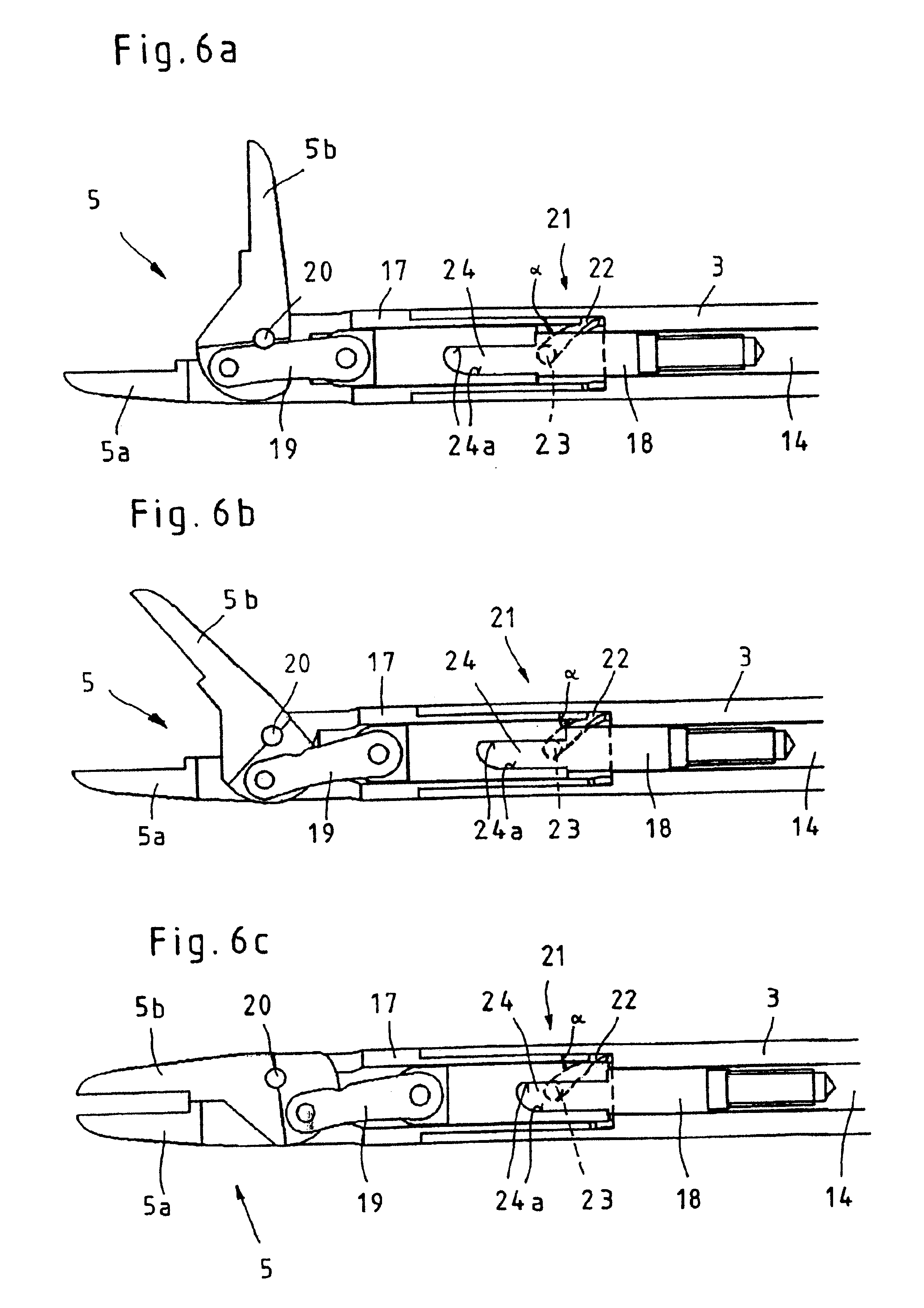Unknown
- Summary
- Abstract
- Description
- Claims
- Application Information
AI Technical Summary
Benefits of technology
Problems solved by technology
Method used
Image
Examples
first embodiment
[0056] In the first embodiment shown in FIGS. 4 and 6a through 6c, the tool assembly 15 consists of a sleeve 17, which is configured as a single unit with a jaw member of the tool 5 that is configured as a rigid jaw member 5a. A tool shaft 18 is mounted in the sleeve 17 so that it can slide in the axial direction, and said shaft is connected on the distal side with the rotatable jaw member 5b of the tool 5 by an articulated lever 19 and on the proximal side can be connected firmly with the rod base body 14. To allow the axial sliding of the push-pull rod 4 to be transmitted directly and as free as possible of play to the rotatable jaw member 5b by the tool shaft 18, the articulated lever 19 is mounted so that it can rotate both on the rotatable jaw member 5b and on the tool shaft 18. The sleeve 7 equipped with a rigid jaw member 5a and the tool shaft 18 are connected or coupled to one another by the rotatable jaw member 5b and a rigid rotation axle 20 of the rotatable jaw member 5b,...
second embodiment
[0074] In the second embodiment, shown in FIGS. 8a through 9c, the tool assembly 15 consists likewise of a sleeve 17, which is configured as a single unit with a jaw member of the tool 5 that is configured as a rigid jaw member 5a. The rod base body 14 of the push-pull rod 4 is mounted so that it can slide in the axial direction in the sleeve 17 and on the distal side it is connected with the rotatable jaw member 5b of the tool 5. To allow the axial sliding of the push-pull rod 4 to be transmitted directly onto the rotatable jaw member 5b, and as free of play as possible, the rod base body 14 is mounted rotatably on the rotatable jaw member 5b. The sleeve 17 equipped with the rigid jaw member 5a and the rod base body 14 are connected or coupled to one another by the rotatable jaw member 5b and a rigid rotation axle 20 of the rotatable jaw member 5b, in such a way that the rotation axle 20 is mounted in the sleeve 17.
[0075] Finally, FIGS. 8 through 9c according to this second embodim...
embodiment
ACCORDING TO FIGS. 6A THROUGH 6
[0079] To start the assembly, the tool 5 is converted into the installation position illustrated in FIG. 6a by opening the jaw members 5a and 5b, and in said position the rotatable jaw member 5b is found in an extremely wide-opened position, into which the jaw member 5b of the assembled tubular instrument cannot be converted.
[0080] In this installation position the hollow shaft 3, with its distal end foremost, is pushed onto the push-pull rod 4 until the distal end is in contact with the sleeve 7 of the tool assembly 15. The hollow shaft 3 and push-pull rod 4 components are coupled then by rotating the components with respect to one another until the control pegs engage in the guide tracks 22. Then the components 3 and 4 are rotated further with respect to one another until the control peg 23 has reached the end of the guide track 22.
[0081] If the push-pull rod 4 is drawn in the axial direction all the way to the proximal end or else the jaw members ...
PUM
 Login to View More
Login to View More Abstract
Description
Claims
Application Information
 Login to View More
Login to View More - R&D
- Intellectual Property
- Life Sciences
- Materials
- Tech Scout
- Unparalleled Data Quality
- Higher Quality Content
- 60% Fewer Hallucinations
Browse by: Latest US Patents, China's latest patents, Technical Efficacy Thesaurus, Application Domain, Technology Topic, Popular Technical Reports.
© 2025 PatSnap. All rights reserved.Legal|Privacy policy|Modern Slavery Act Transparency Statement|Sitemap|About US| Contact US: help@patsnap.com



